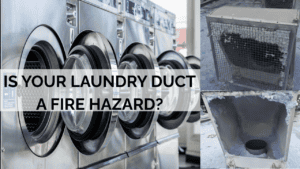[vc_row][vc_column][vc_column_text]3.4 million children across the country are regularly exposed to toxic, polluted indoor air due to poorly ventilated school buildings. This poses a long term risk to pupils as young as four years old, from suffering serious health conditions to infectious diseases.
After the Government pledged £25 million to ensure all state-funded schools in the UK would receive a free CO2 monitor, the latest disappointing figures reveal that less than half of schools have received their monitors.
While the Government falls short on its promise, many experts believe that the quality of the CO2 monitors being distributed by the Department of Education are not good enough to gain a clear and accurate picture of the current issue.
Those schools who have received the Government-funded monitors will be able to see data which shows the levels of CO2 within their buildings, but this won’t allow schools to see other pollution levels that impact their indoor air quality, such as chemicals, gases and Volatile Organic Compounds. The monitors will only tell schools half the story in terms of indoor air pollution and won’t actually help them to tackle the issue.[/vc_column_text][vc_column_text]
How poor indoor air quality impacts students
The negative side effects of low quality indoor air on pupils and teachers is well documented. Those within school communities and exposed to toxic indoor air can suffer from a range of long term mental and physical health issues.
Children can live with the implications of long term exposure to poor quality indoor air across their lifetime as their organs are underdeveloped. Health issues, such as lung irritation and an increased risk of developing asthma are very real and life limiting illnesses associated with breathing this toxic air on a daily basis. More common symptoms include feeling nauseous and drowsy and suffering from prolonged headaches.
There is also a direct correlation between poor indoor air quality and decreased pupil performance, with schools finding students’ attention spans significantly slower in classrooms that have higher levels of CO2. This can lead to children missing large chunks of their learning and falling behind, which can have catastrophic consequences for future education, their careers and personal development.[/vc_column_text][vc_column_text]
How can schools improve indoor air quality moving forward?
Although schools don’t have the robust guidance, funding or legislation that is needed to really stamp out this issue, they can take steps to get informed. Schools can focus on implementing an approach that ensures they have the facts about their current indoor air challenges by undertaking an indoor air quality assessment.
With over 13 years dedicated to improving indoor air quality, we have the knowledge and experience to undertake air hygiene assessments across a range of educational facilities to measure the transmission of airborne pollutants and risks. This provides a clear understanding of the air within a building and how that impacts those working and studying in that space.
Once the assessment is complete, we recommend a bespoke research-led solution that aims to create an optimal teaching and learning environment whilst improving energy efficiencies. These solutions can also safeguard the health and wellbeing of those inside your facility, which is of paramount importance.[/vc_column_text][vc_column_text]
Government legislation
In 2018, the government produced guidance on thermal comfort, ventilation and indoor air quality in schools called the BB 101. This describes the levels of acceptable particulate matter within teaching and learning environments in the UK. However, there is no current legislation that supports schools taking action against poor indoor air quality, robust strategies to help them tackle the issue or thorough research to show the scale of the problem.
When the Department of Education launched the £25 million free CO2 monitor initiative in 2021, it was met with skepticism, as many professionals across education and the air quality industry believed it was more of a box ticking exercise that didn’t help to solve the real problem at hand.
David Glover, Technical Director at Plasma Clean and a leader in the air quality industry for over 15 years, said: “The Government’s scheme isn’t fit for purpose. It allows educators to identify the problem but offers no support to a solution, leaving students and teaching staff in the same situation. It’s the responsibility of the Government to provide a safe learning environment, and they’re falling short of that duty.”[/vc_column_text][vc_column_text]
How can the government tackle indoor air quality in the future?
To gain an understanding of the scale and complexity of the issues surrounding indoor air quality within schools, the government could begin by commissioning research and collating data. This would lay the foundations to develop a clear strategy to help educational facilities begin to tackle the issue while developing regional pathways to support schools in the worst-hit areas of the UK.
It’s clear that there isn’t enough being done to protect the millions of children and teachers at risk each day. With the lack of government support and funding, schools are being left to solve this problem by themselves after a challenging couple of years facing the pandemic.
For more information and support and to take the next steps to protecting your pupils contact us today via [email protected].[/vc_column_text][/vc_column][/vc_row]








